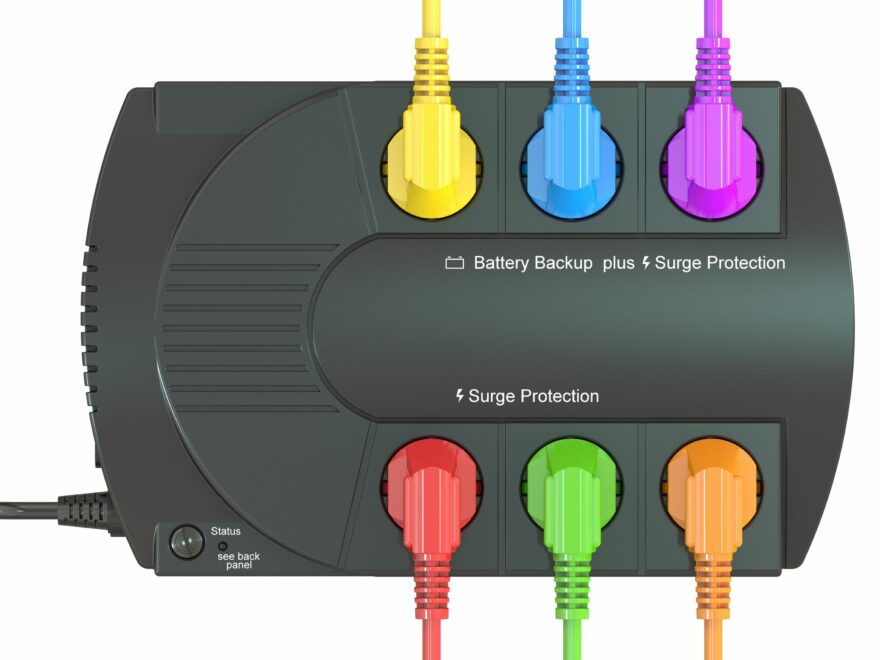An Uninterruptible Power Supply, or UPS as they are commonly known, is a device that is not commonly used in the residential market. Commercially, businesses use them because if they lose power they lose business. And if their systems shut down without notice then they can lose valuable information as well. Today’s world is full of smart devices that are power sensitive, and can be vulnerable to power surges or brownouts. We have no control over the power voltage supplied by our local power authority. So the more we can protect them the better.
All modern alarm systems have battery back-up. If the power goes off, or the unwanted visitor takes the power down, then the alarm system keeps working. But what about a CCTV system? Most people forget that when the power goes off then the camera system will stop recording. That’s great. Why bother spending a thousand dollars on a good camera system and you are not prepared to spend a hundred dollars on a good UPS. Just let the unwanted visitor walk away with your hard earned property!
Again, you do not have to spend a lot of money on a UPS. You just need to know the power usage of the device you want to hold up. NVR’s don’t draw a lot of power so you won’t need a very large UPS to hold the device up for an hour. This amount of back-up time should be more than sufficient to suit most people’s needs. Another service which we take for granted is our broadband network. Now that everything is based around fibre to the home, people forget that power does not travel down a glass core. So when the power goes down we lose our internet connection. Now wouldn’t that upset some people?
There are two main types of UPS’s in the market. The Line Interactive offers only the most basic features, providing surge protection and battery backup. When the incoming voltage falls below or rises above a predetermined level, the internal DC-AC inverter circuitry, which is powered from an internal storage battery, kicks in. The UPS then mechanically switches the connected equipment on to its DC-AC inverter output. The switchover time can be as long as 25 milliseconds depending on the amount of time it takes the UPS to detect the lost utility voltage. This UPS is designed to power certain equipment, such as a personal computer, without any objectionable dip or brownout to that device.
Then we have the Online UPS. The batteries are always connected to the inverter, so that no power transfer switching is necessary. When power loss occurs, the rectifier simply drops out of the circuit and the batteries keep the power steady and unchanged. When power is restored, the rectifier resumes carrying most of the load and begins charging the batteries again. The main advantage of an on-line UPS is its ability to provide an “electrical firewall” between the incoming utility power and sensitive electronic equipment.
The initial cost of the online UPS may be higher, but its total cost of ownership is generally lower due to longer battery life. The online UPS may be necessary when the power environment is “noisy”, when utility power sags, outages and other anomalies are frequent, when protection of sensitive IT equipment loads is required, or when operation from an extended-run backup generator is necessary.
In summary
I guess the old adage of “do you want fries with that” applies to a UPS. You need to explain to your customer the reasons why they should have one and let them decide if they want it or not. At least if they say no and something goes wrong, they can’t blame you for having no recorded image of the event taking place.

